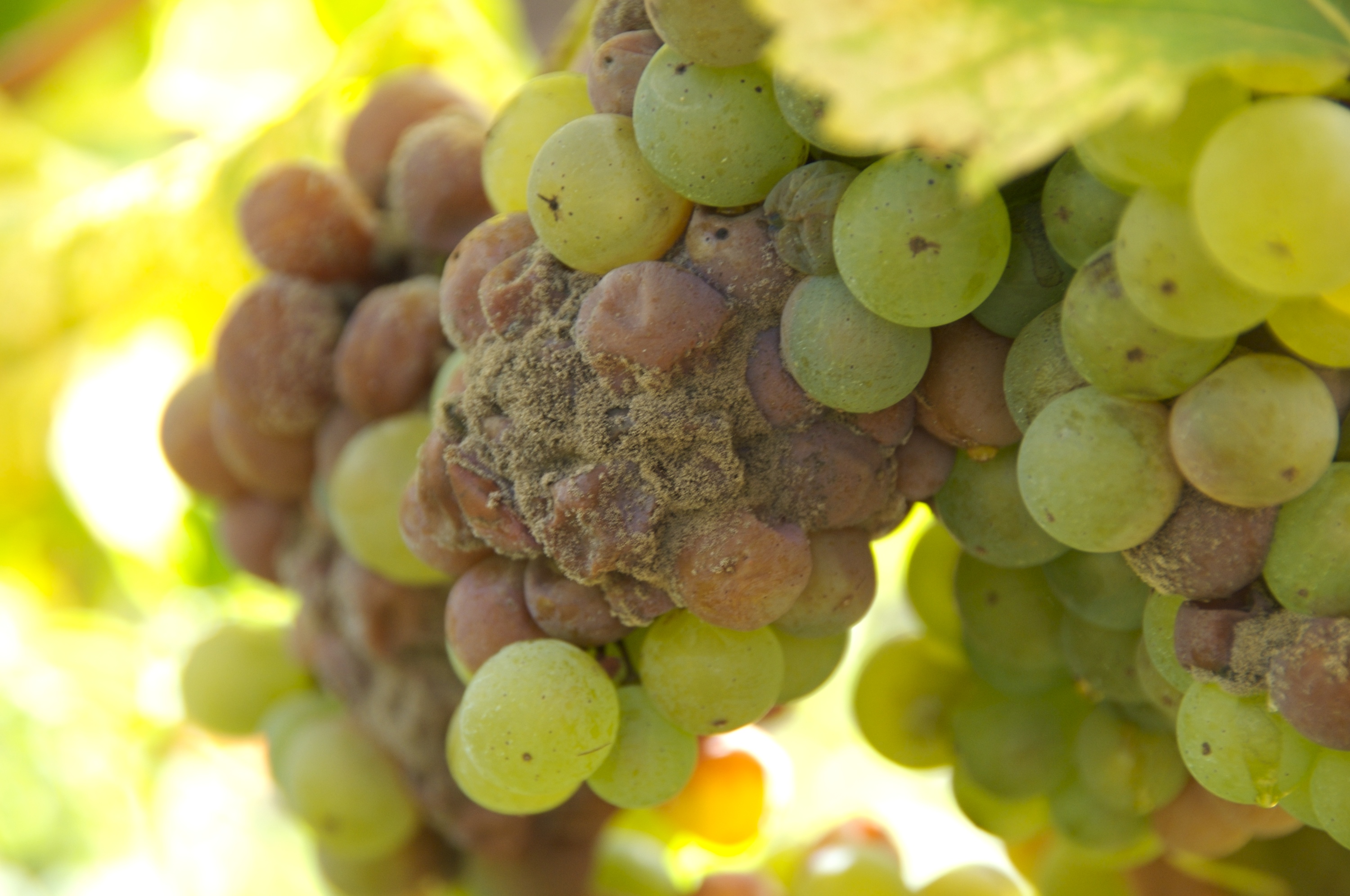Last week, we covered
what Botrytis actually is and how this fungus helps create grapes that are perfect for
sweet wines. Now let's talk about how these wines are actually made.
As explained in last week's Wine 101, the fungus helps create an environment that allows the grapes to shrivel and concentrate its sugar content. During the fermentation of these grapes, there is so much sugar that the yeast cannot ‘eat’ all the sugar, and gets ‘killed’ by the alcohol when it reaches a certain point, hence giving you a
sweet wine with a fair amount of alcohol.
It also adds flavor components to the wine, which characteristic aromas of honey, beeswax or ginger. The color will usually be a deep shiny gold and offer luscious, addictive aromas, very easily recognizable. Because of the dehydration and the sensitivity of the grapes at that time (you can lose all your production if it rains a few days before harvest), the price of these wines can sometime go quite high. This is why it often comes in a half bottle. It seems cheaper, but also, it is hard to drink many glasses of these sweet wines.
Mostly white grapes are used, with a few having a certain affinity for the fungus:
Sauvignon Blanc, Semillon,
Riesling,
Gewurztraminer,
Pinot Gris or Muscadelle. The best ones you would find come from the Bordeaux region, especially from the villages around Sauternes, beside the Garonne River like our
new arrival. It’s a stunner! You can also find great ones from Alsace in France, Germany (for Spätlese level and above), Hungary (and its famous Tokaji wines), or also Australia, which has a long history with sweet wines.
Botrytis wines can be drunk as a pre-dinner drink or with dessert. A little tip for matching sweet wines and desserts: always go with the same color for both – meaning that you should try to pair fruit-based desserts with yellow wines like
botrytis wines, and pair chocolate desserts with red sweet wines, like Port or Maury. Meanwhile, the best pairing to goes with a
Noble wine? Go French and try this match made in heaven with Foie Gras!
So with centuries of practice, winemakers have managed to turn around this pesky situation to their advantage, managing to create liquid gold from hideous, moldy, ugly-looking shriveled grapes!












